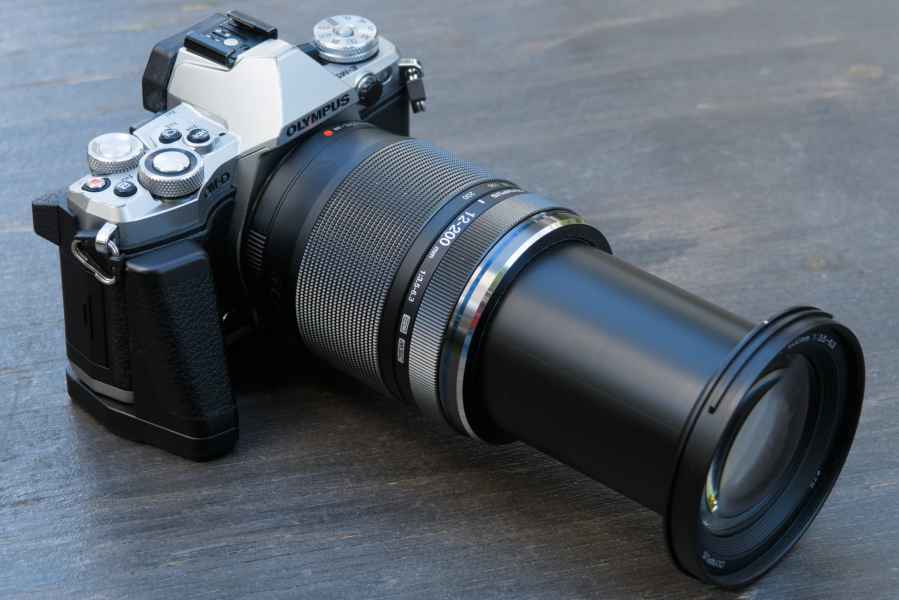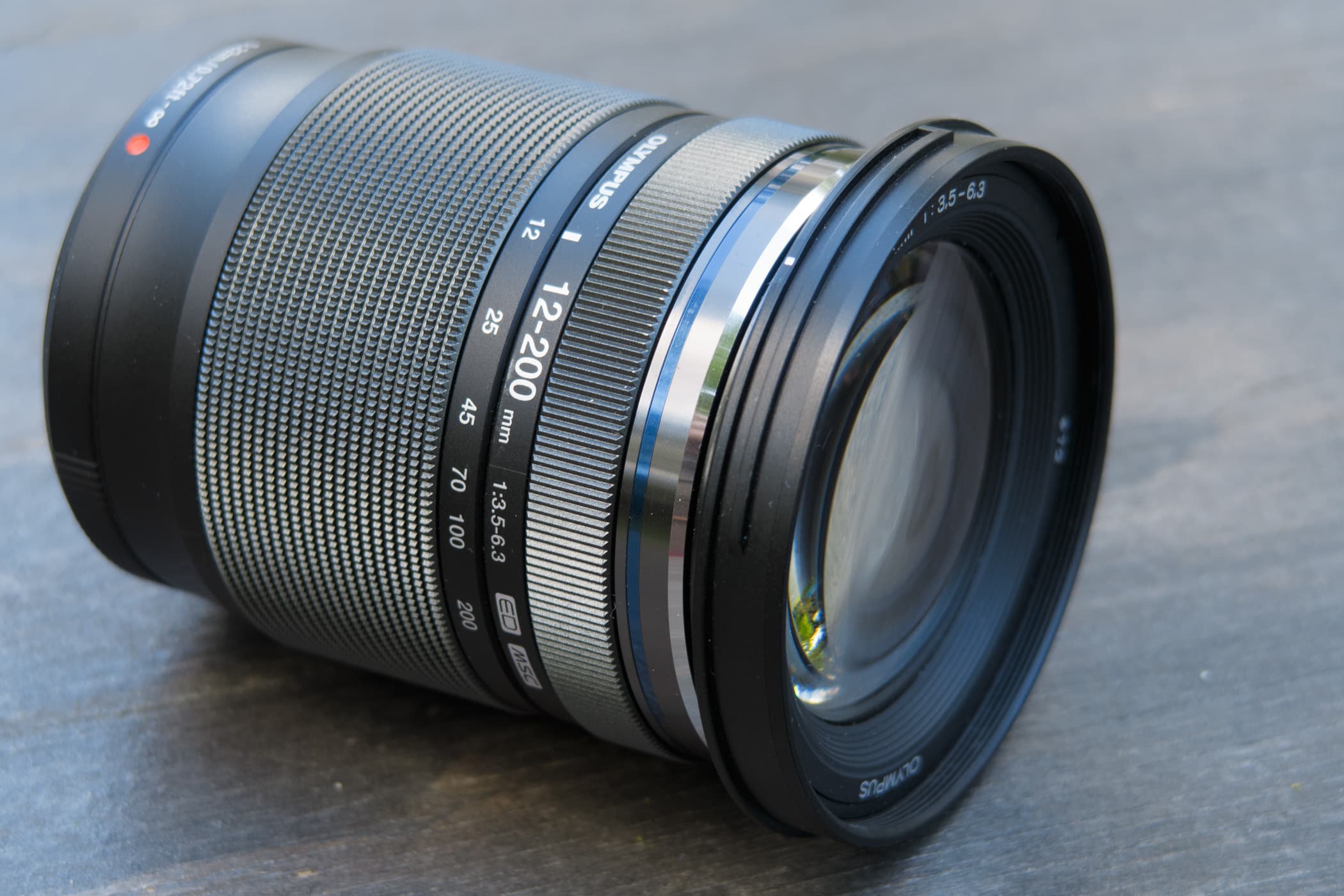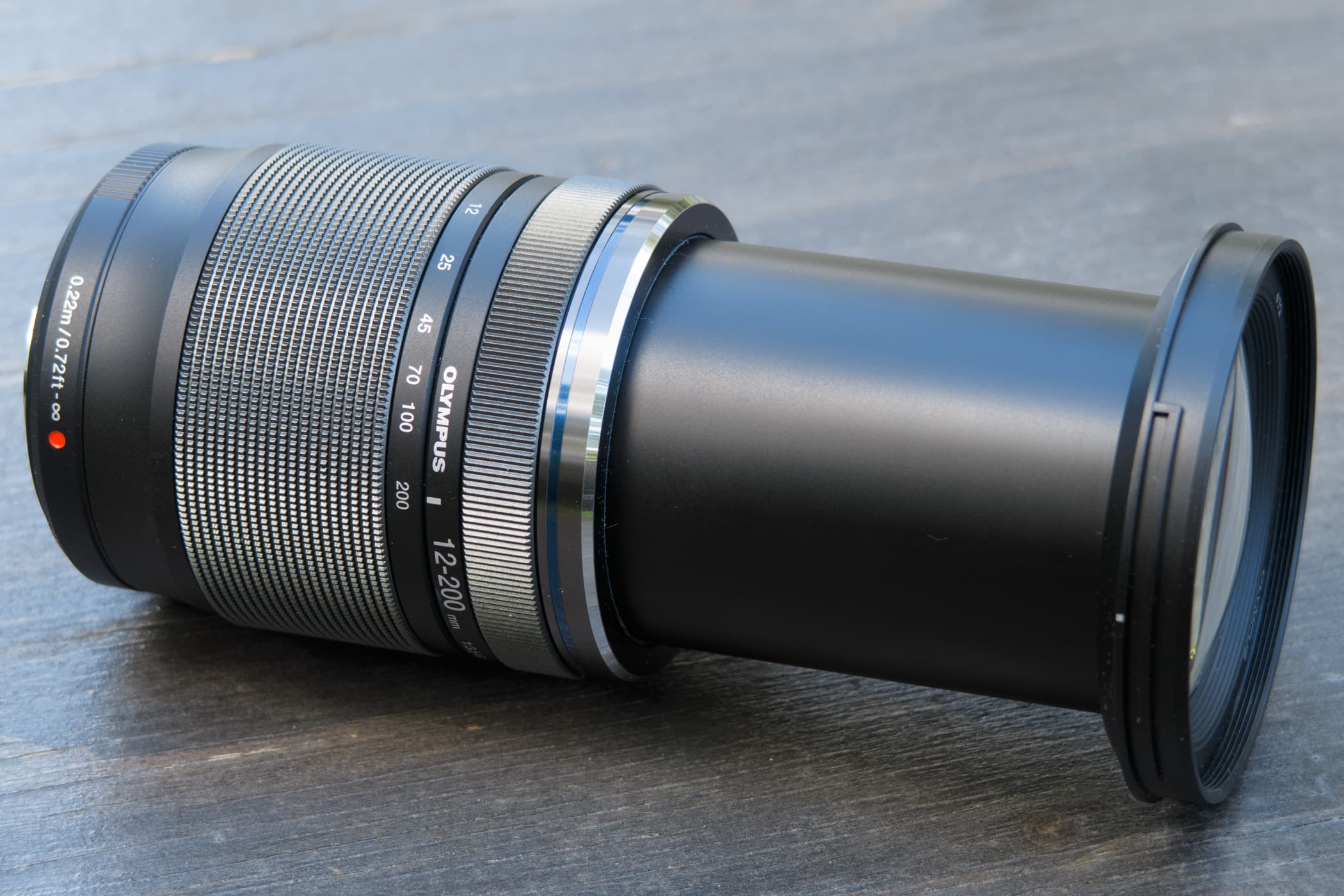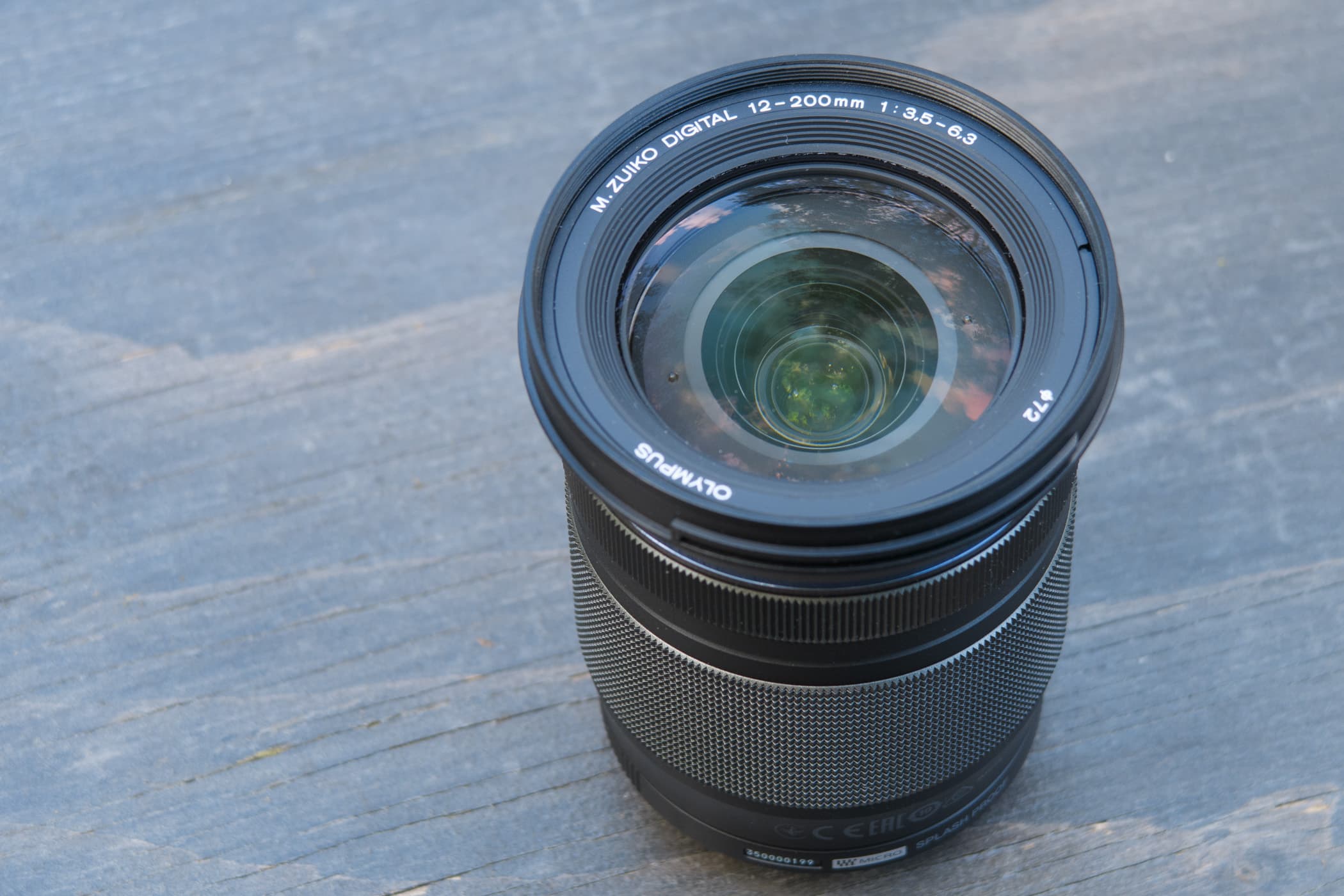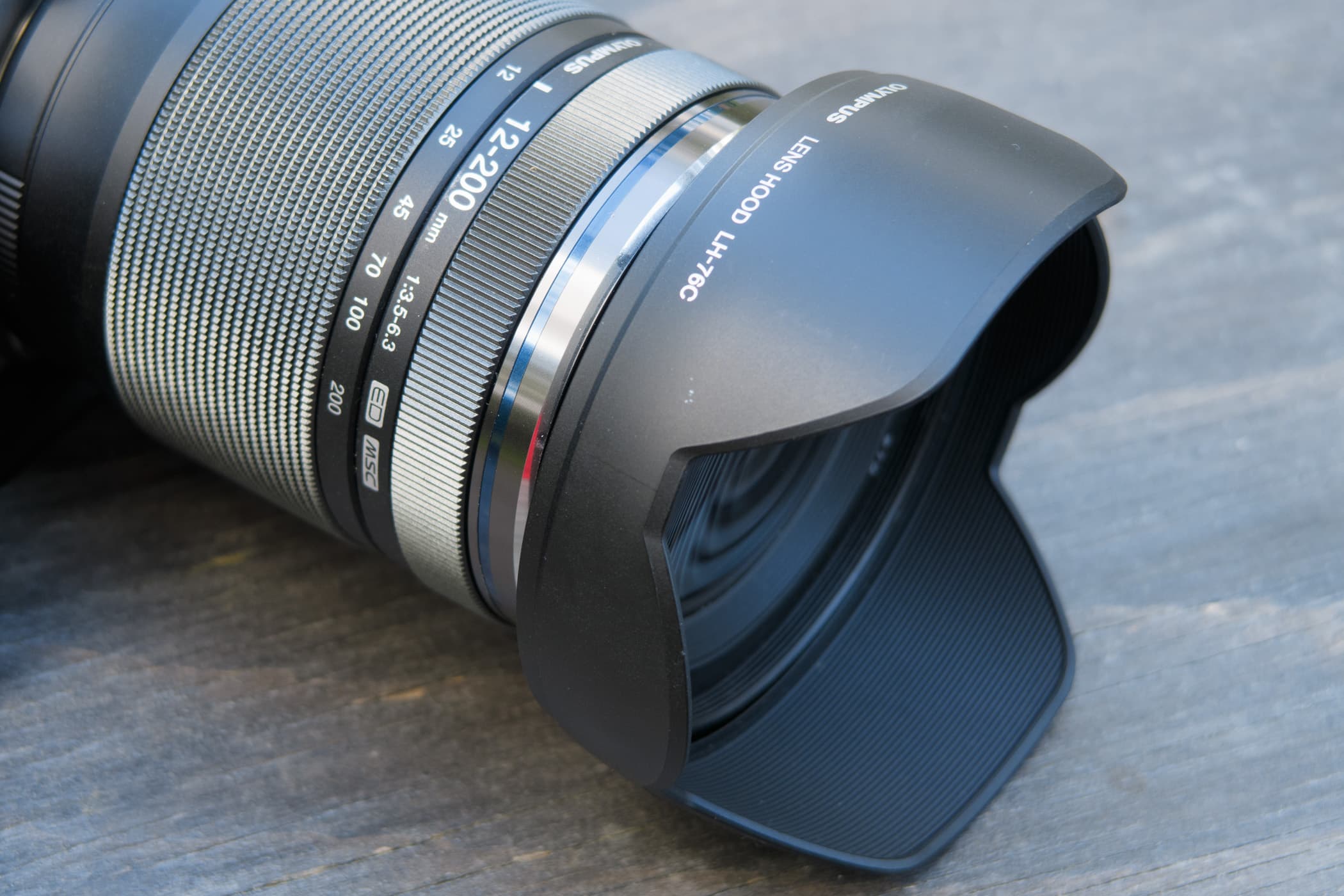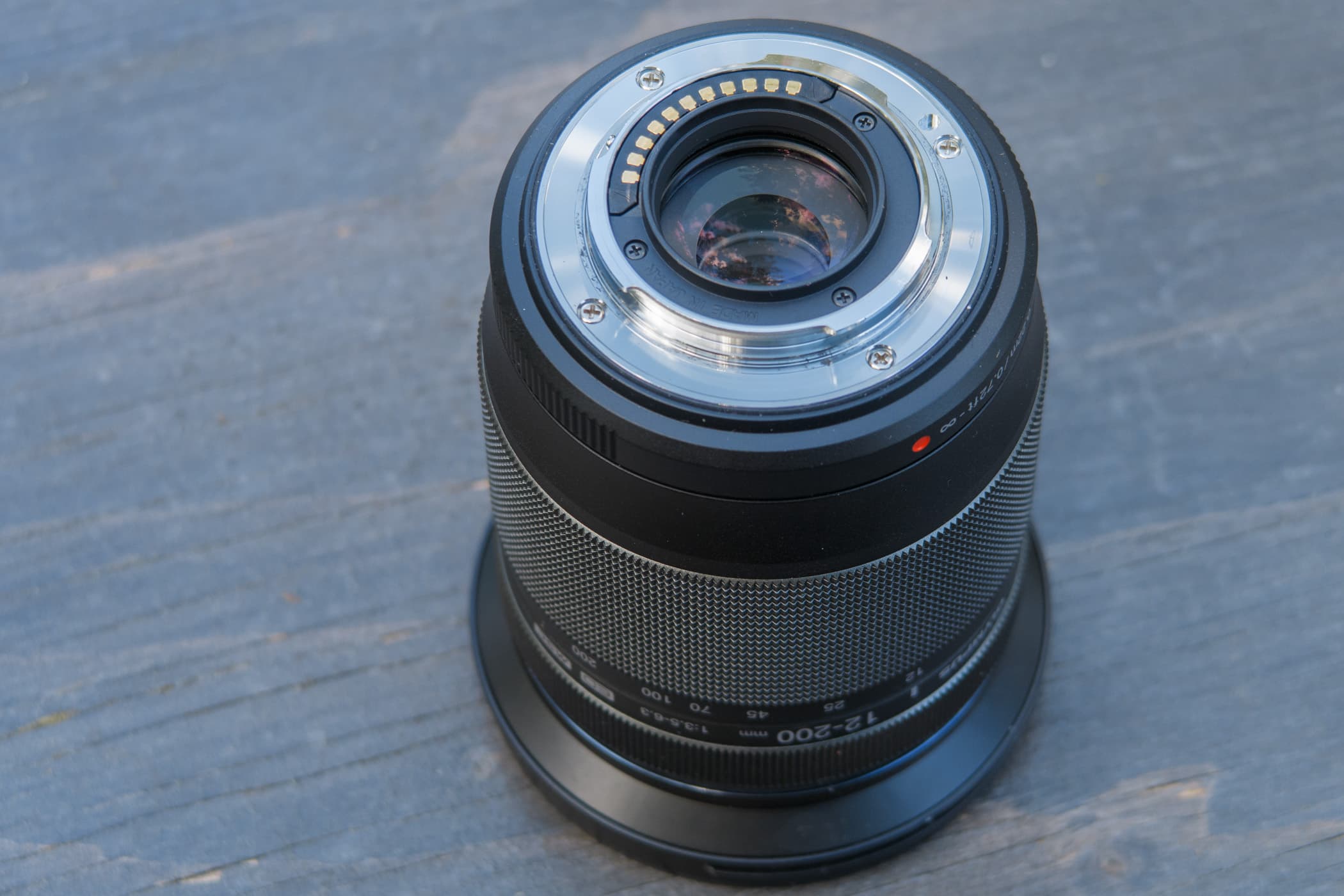Superzoom lenses with large zoom ratios have been popular ever since they arrived on the scene. The appeal of going out with the camera and just one lens for most photo opportunities is compelling. However, lenses that cover a very wide focal length range are less good when it comes to image quality, which is why the best performing zooms are less ambitious in scope.
The OM System M.Zuiko Digital ED 12-200mm f/3.5-6.3 has an incredible 16.6x zoom range. With the 2x crop factor of the Micro Four Thirds (MFT) format, this is equivalent to 24-400mm in the 35mm format. For MFT cameras, there is nothing quite like this wide-ranging zoom.
The next closest are the Panasonic Lumix G Vario 14-140mm f/3.5-5.6II Asph Power OIS which sells at $498 / £619, the OM System 12-100mm f/4 IS PRO at $1199 / £1199 and the Tamron 14-150mm f/3.5-5.8 Di III at $300 used / £494. The latter is shown as available new from some UK retailers but is no longer listed on Tamron’s website.
Cramming so many focal lengths into a single lens inevitably compromises optical performance. Sharpness and rendition of fine detail suffer, and susceptibility to flare and ghosting can befall superzoom lenses. However, OM Systems (formerly Olympus Cameras) has an impressive track record with its lenses, so let’s see how this lens performs on the AP test bench.
For more reading on MFT lenses, check out our pick of the Best Micro Four Third lenses in 2023 here.
Olympus 12-200mm f/3.5-6.3: Features
In order to achieve the immense zoom range, Olympus has really gone to town on the optics. The 12-200mm employs 16 elements in 11 groups, including three aspherical elements and a whole array made of special materials. These include extra-low-dispersion (ED) glass, super ED glass, high refractive index (HR) glass and super HR glass: the aim being to reduce distortion and chromatic aberration. Comparing optical formulae shows a distinct resemblance to the aforementioned 12-100mm, although with slightly reduced complexity that’s presumably attributable to the absence of optical stabilisation in the 12-200mm.
Focusing is internal, with a minimum distance of just 0.22m available at the wideangle end. Zoom to full telephoto and this increases to approximately 70cm, but now with a maximum magnification equivalent to 0.46x, corresponding to an image area of 7.6 x 5.7cm. This allows capture of close-ups with a decent working distance of 50cm from the subject.
The lens features a dust-, splash- and freeze-proof design, including a seal around the mount to prevent water ingress. It has a non-rotating 72mm filter thread, and a petal-type hood is included in the box. As usual, I’d recommend using this as a matter of course, both to reduce flare and to protect the front element.
Olympus 12-200mm f/3.5-6.3: Build and handling
Appropriately for a lens that’s ideal for travel, the 12-200mm features relatively lightweight construction, with a plastic exterior instead of the metal barrel used by its Pro-line cousin. But that’s not to say it’s poorly-made, and there’s impressively little play to the barrel even when it’s fully extended to the 200mm position. Zoom creep is almost non-existent when the lens is retracted to 12mm, but the lens will extend under its own weight when pointed downwards at longer focal lengths.
At approximately 10cm long and 455g in weight, this is a large lens by Micro Four Thirds standards, although it’s a fair bit smaller and lighter than the high-end 12-100mm f/4. It’s actually very similar in size and weight to 18-300mm zooms for APS-C DSLRs, but Olympus’s smaller mirrorless bodies mean that the overall package ends up more compact. Despite its size I found it a good match to the Olympus OM-D E-M5 Mark II that I predominantly used for testing. That said, I’d think twice about using it on smaller PEN bodies, particularly without a viewfinder. For the record, I found it also worked perfectly well on Panasonic Micro Four Thirds bodies.
The broad zoom ring occupies most of the barrel, meaning it falls naturally to hand during shooting. It rotates through approximately 90 degrees from the wide to telephoto positions, meaning no shift in grip is required to access the full zoom range. It’s a little stiff in operation, with a noticeable increase in force required to get past the 100mm point, but this doesn’t hamper composition in practical use. The smoothly rotating manual focus ring is placed further forwards, and activates a focus-by-wire mechanism.
Olympus 12-200mm f/3.5-6.3: Autofocus
As we’ve come to expect from Olympus, in good light the 12-200mm provides generally fast, decisive and silent autofocus. But its relatively small maximum aperture means it struggles noticeably in lower light levels, especially at the long end of the zoom. So while it’s perfectly well behaved for daytime shooting, it’s not going to be the best choice indoors or at night.

In good light the lens focuses quickly and accurately, even with off-centre subjects and at the long end of the zoom. Olympus E-M5 II, 200mm, 1/250sec at f/6.3, ISO 250
When it comes to continuous focus, chances are the camera body will be the limiting factor. Only Olympus’s top-of-the-range E-M1 series bodies feature phase detection for rapid C-AF, with the others falling back on the slower contrast-detection method. I found that the lens easily kept up with everything the E-M5 II’s AF system asked of it when tracking moving subjects.
Switching the camera to manual focus activates the ring at the front of the lens, which drives the lens’s focus group electronically. Rotating the ring will also initialise your preferred focus aid, either magnified view or peaking, depending on how the camera is configured. Manual focusing works well, making it easy to get sharp images on the few occasions when autofocus fails.
Olympus 12-200mm f/3.5-6.3: Performance
The moment you start looking closely at images recorded using the 12-200mm, it becomes clear that this really isn’t a lens for pixel-peepers. Like most superzooms, it’s actually pretty good at its wider settings, especially when stopped down a touch to sharpen up the corners.

However, it gets less sharp as you zoom in, and is just plain soft at telephoto. So if you’re looking for crisp detail corner-to-corner when viewing your images up-close onscreen, or want to make super-sharp A3 prints, you’ll need to compromise on zoom range and save up more money for the 12-100mm F4 IS Pro or 12-40mm f/2.8 Pro. But for those who don’t need fine detail, then the 12-200mm actually does a pretty decent job.

At 200mm, many users will find the lens is still sharp enough for their purposes. Olympus E-M5 II, 200mm, 1/160sec at f/8, ISO 400.
One noteworthy positive is the impressive close-up capability. While you’ll get the closest focus at wideangle, you’ll get the highest subject magnification at telephoto, and with a decent working distance too. This is handy if you want to avoid disturbing skittish subjects.

The 12-200mm is surprisingly capable when it comes to close-ups. Olympus E-M5 II, 1/1250sec at f/6.3, ISO 1250
Like all Micro Four Thirds lenses, the 12-200mm benefits from integrated software distortion compensation, with the lens passing the requisite correction parameters to the camera, which are also encoded into raw files. This means you don’t see the unpleasant bending of straight lines along the edges of the frame that’s characteristic of SLR equivalents.

Automatic distortion correction is advantageous for architectural shots. Olympus E-M5 II, 20mm, 1/400sec at f/6.3, ISO 200
On older Olympus bodies such as the original OM-D E-M5 you’ll see colour fringing towards the corners due to lateral chromatic aberration, especially at full telephoto, but this is successfully suppressed on more recent models, including those from Panasonic.

As usual, Olympus’s in-body stabilisation does a fantastic job, especially at shorter focal lengths. Olympus E-M5 II, 0.3sec at f/4.5, ISO 800
The lack of optical stabilisation is much less of a problem than I initially feared. It’s clear that 200mm nears the limit of what both Olympus and Panasonic’s in-body stabilisation systems can sensibly work with. In practice, you’ll probably only get a couple of stops of shake reduction at the telephoto end. That’s a lot better than nothing, and you’ll still get considerably greater stabilisation at wideangle. However I really wouldn’t recommend using this lens on Panasonic bodies that lack in-body stabilisation.

The lens gives attractive blurred backgrounds towards the telephoto end. Olympus E-M5 II, 1/250sec at f/6.3, ISO 200
With its long focal length, the 12-200mm can deliver some nicely blurred backgrounds, especially when shooting close-ups. In fact I was pleasantly surprised by the attractiveness of the bokeh, which is usually a weakness of superzoom lenses. Flare resistance is pretty impressive too, given the complexity of the optical design.
Olympus 12-200mm f/3.5-6.3: Resolution
Even a quick glance at our Image Engineering MTF tests reveals that this isn’t the sharpest optic you’ll see. At wideangle it records very respectable central sharpness, but the corners lag behind. In the middle of the zoom range it’s not so sharp in the centre, and the corners are even softer. Zoom to full telephoto, and it’s simply not very sharp at all. For best results, select apertures around f/5.6-f/8.
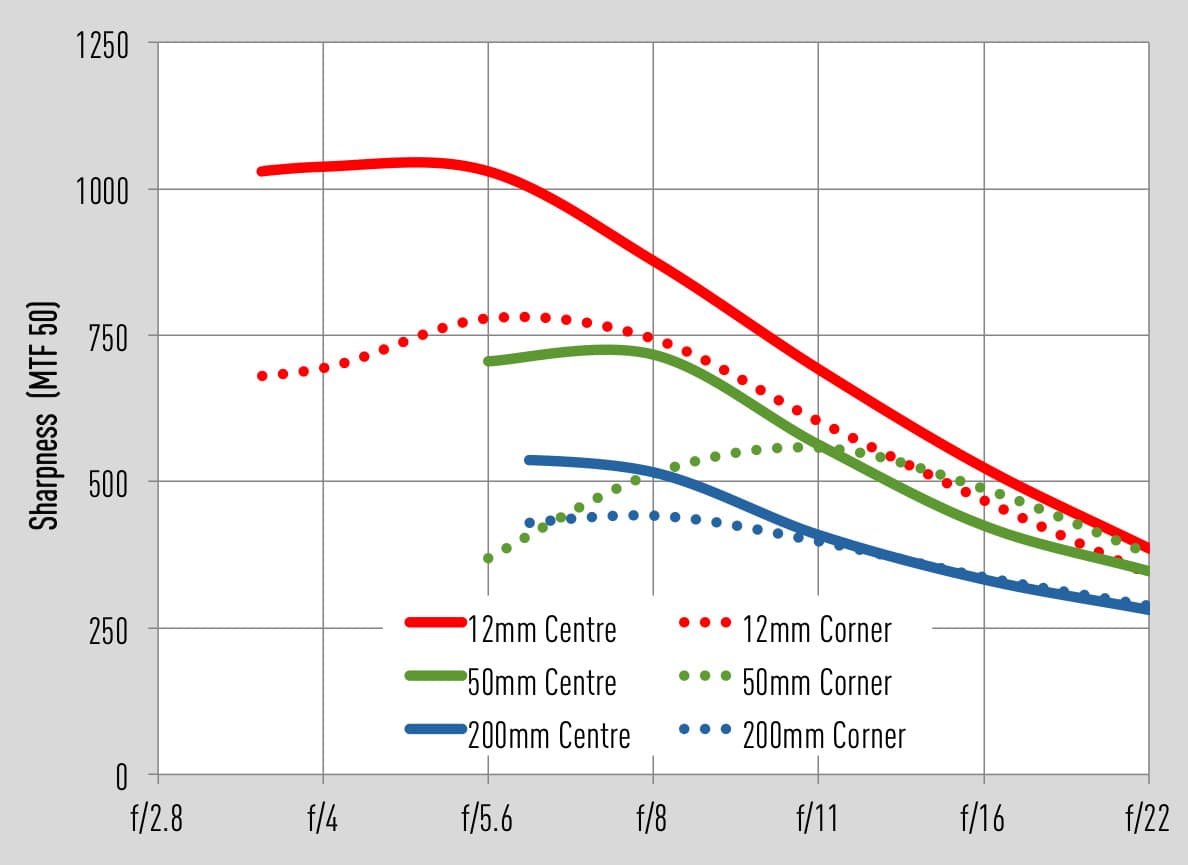
Olympus 12-200mm f/3.5-6.3: Shading
On the whole, vignetting doesn’t present much problem with this lens. There’s no appreciable shading with the aperture wide open either at wideangle or in the mid-range; but some does become visible at the telephoto end. Even then, you’ll probably only discern it with evenly-toned subjects, and it’s not especially objectionable anyway. It also decreases quickly on stopping down.
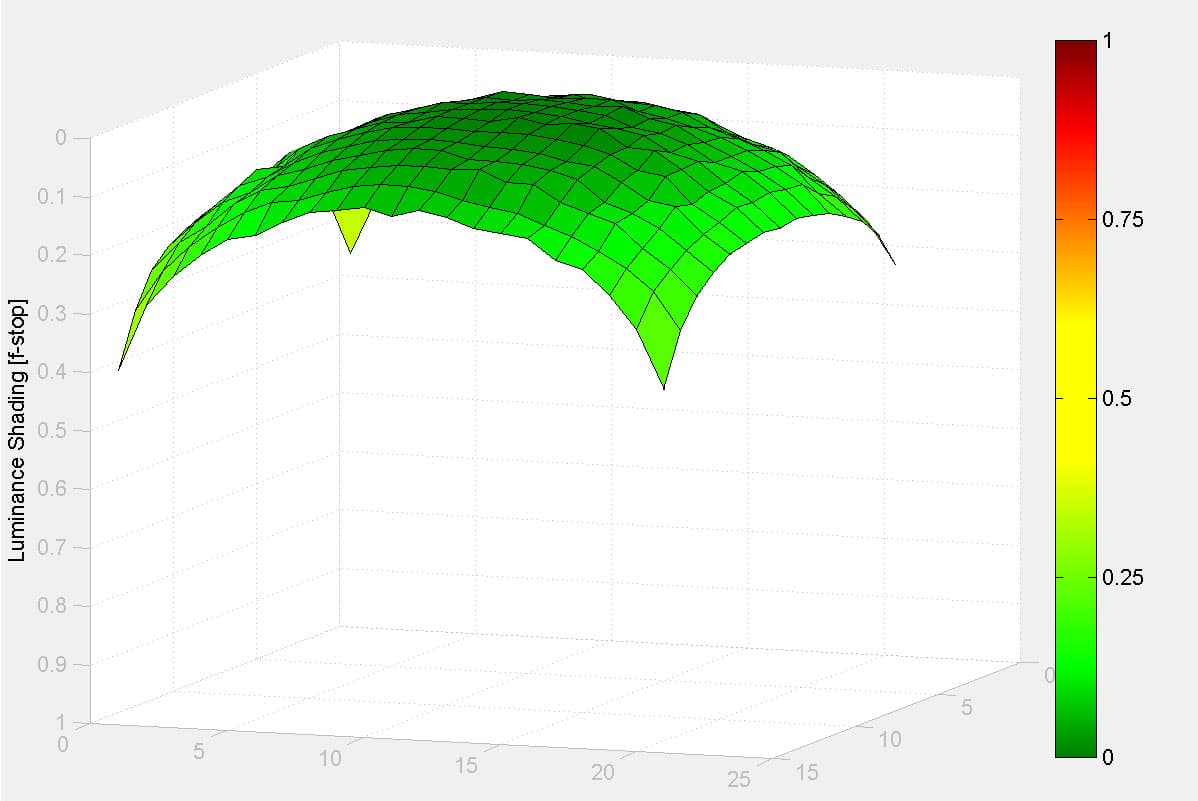
Shading at 12mm f/3.5
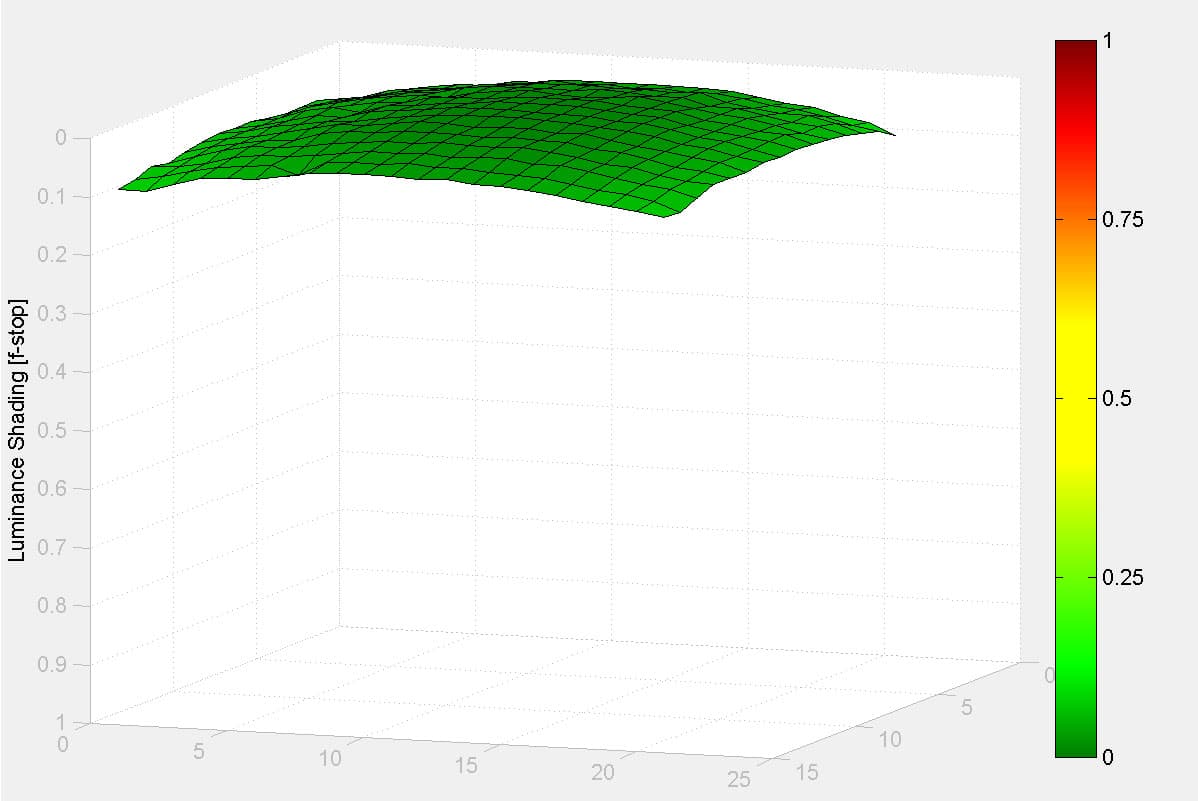
Shading at 50mm f/5.7
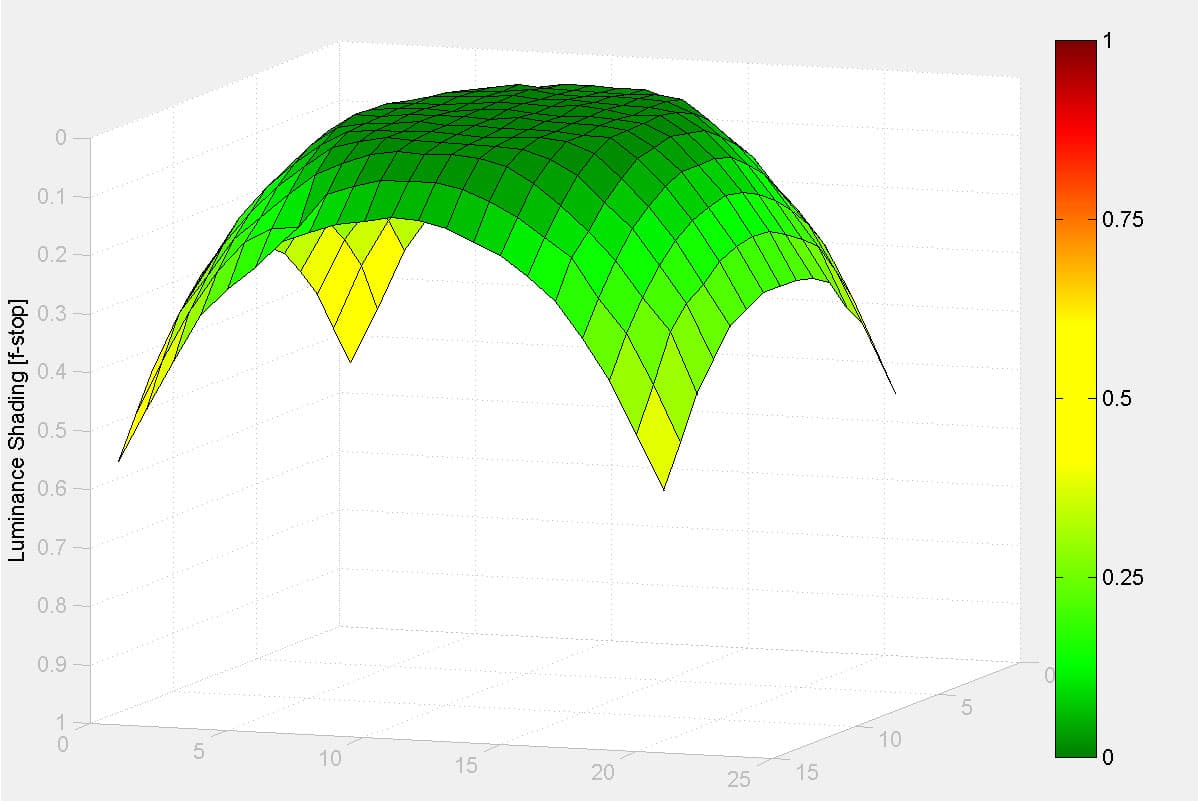
Shading at 200mm f/6.3
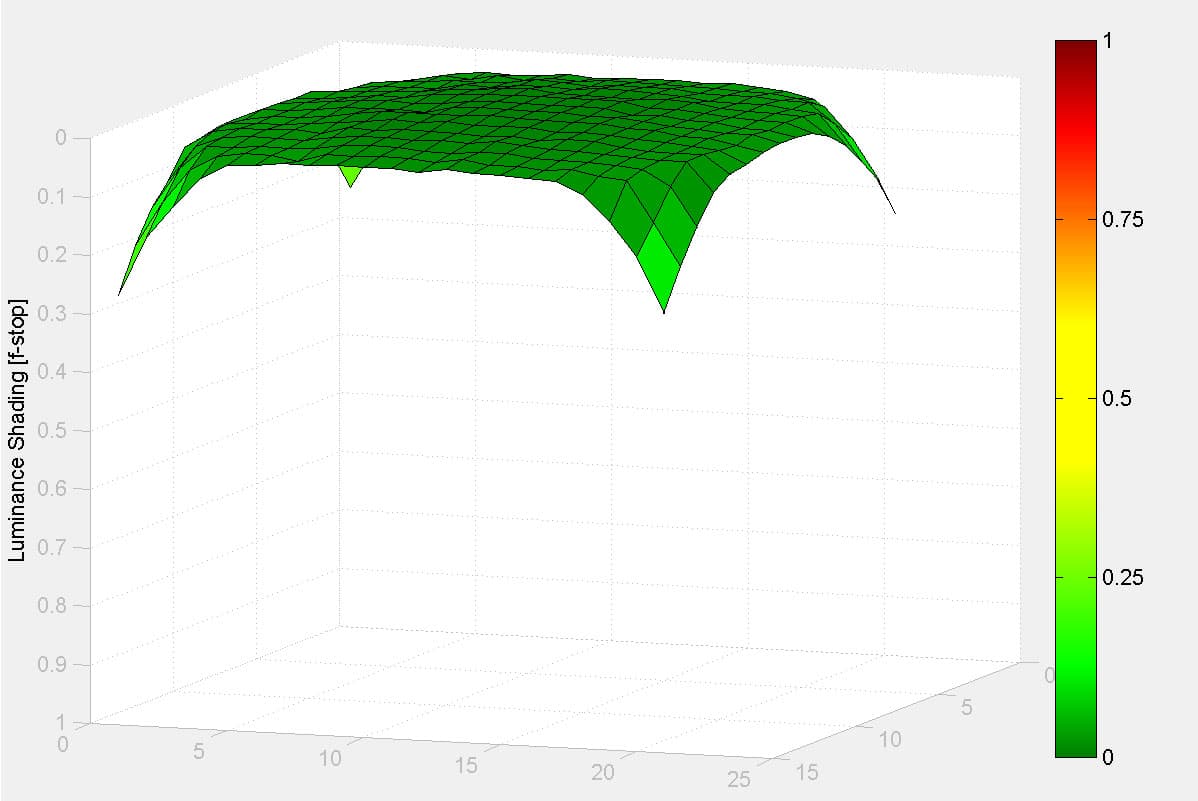
Shading at 200mm f/11
Olympus 12-200mm f/3.5-6.3: Curvilinear distortion
The Micro Four Thirds system uses integrated software compensation to deal with curvilinear distortion, applied automatically in-camera and with correction values recorded in the raw file metadata. As a result, you simply don’t see the massive distortion that you’d expect with such a long zoom range – it’s processed away automatically to give near-perfectly straight lines.
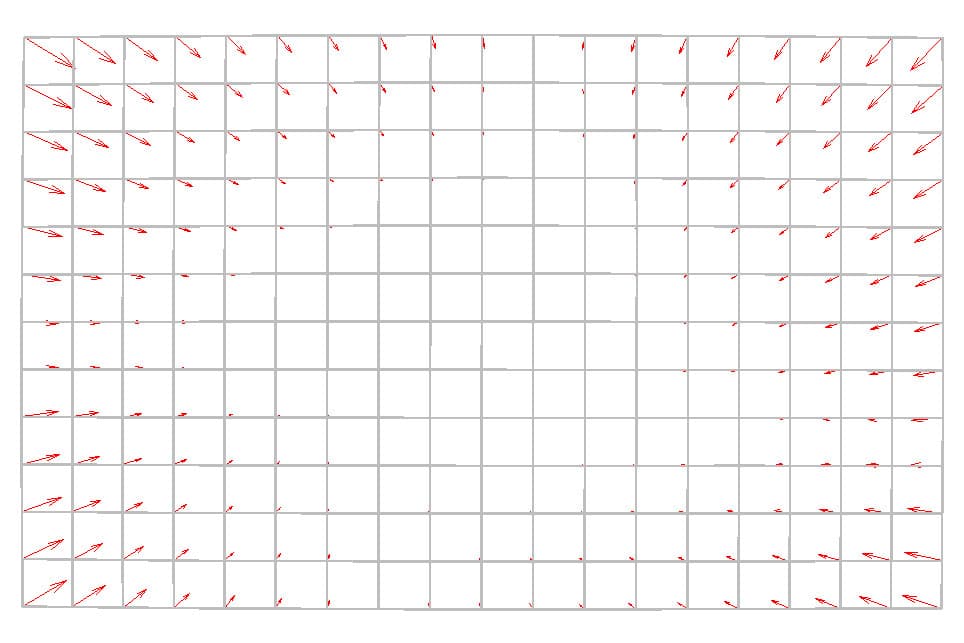
12mm, corrected raw, SMIA TV= -0.8%

50mm, corrected raw, SMIA TV= 0.1%

200mm, corrected raw, SMIA Tv= -0.1%
Olympus 12-200mm f/3.5-6.3: Verdict
There is no doubt that the OM System M.Zuiko Digital ED 12-200mm f/3.5-6.3 has potential and is decent value for money. However, there are compromises. Sharpness is acceptable but if you demand critical crispness for really big enlargements, this lens might not be for you – go for a less ambitious zoom.
-

Not every picture necessarily has to be pin-sharp to be effective. Olympus E-M5 II, 178mm, 1/250sec at f/6.3, ISO 200
In use, its very wide focal length range, impressive close focus and weather-resistant construction, mean that this lens can tackle a wide range of subject matter. However, its modest maximum aperture makes it less well suited to low-light shooting; although the very good ISO performance of the latest MFT cameras does offset this. The limited maximum aperture also means it’s more difficult to achieve shallow depth of field effects.
Ultimately, whether you buy the OM System M.Zuiko Digital ED 12-200mm f/3.5-6.3 or go for a couple of zooms to cover the same focal length range is obviously up to you. However, this lens is worth a serious look. While not the sharpest lens I’ve used, I really enjoyed shooting with it.

Specifications
Filter diameter
72mm
Lens elements
16
Groups
11
Diaphragm blades
7
Aperture
f/3.5-6.3
Minimum focus
0.22m
Length
99.7mm
Diameter
77.5mm
Weight
455g
Lens mount
Micro Four Thirds



